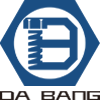Cold heading is the use of plasticity in the metal, in the selection of cold mechanics for pressure or cold drawing, to achieve the purpose of metal solid deformation.
The forging process by which the top of a bar or wire is thickened at room temperature. Cold heading is mainly used in the manufacture of bolts, nuts, nails, rivets, steel balls and other parts. The forging billet materials can be copper, aluminum, carbon steel, alloy steel, stainless steel and titanium alloy, etc., and the material utilization rate can reach 80%. Cold heading is mostly carried out on a special cold heading machine, which is easy to realize continuous, multi-station and automatic production. The processes of cutting, upsetting, accumulation, forming, chamfering, wire rubbing, diameter reduction and edge cutting can be completed sequentially on the cold heading machine. The production efficiency is high, which can reach more than 300 pieces per minute, and the diameter of the maximum cold heading workpiece is 48 mm.
It is a typical process of cold heading bolt.
In the catering industry, Lengdun refers to the production of cold meat, that is, the work of cold salad and smoked sauce, also known as white case. Hot pier is the work of making, frying and frying, also known as the red case.
As far as the surface is concerned, the cold heading product looks more beautiful than the hot heading product and has a good finish. In terms of use, the hardness of the hot heading nut is generally higher than that of the cold heading product, and the strength is higher. For users with high requirements, there is a great difference in materials.
Post time: May-26-2023
